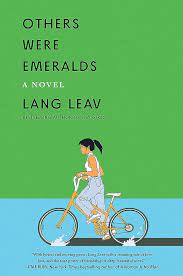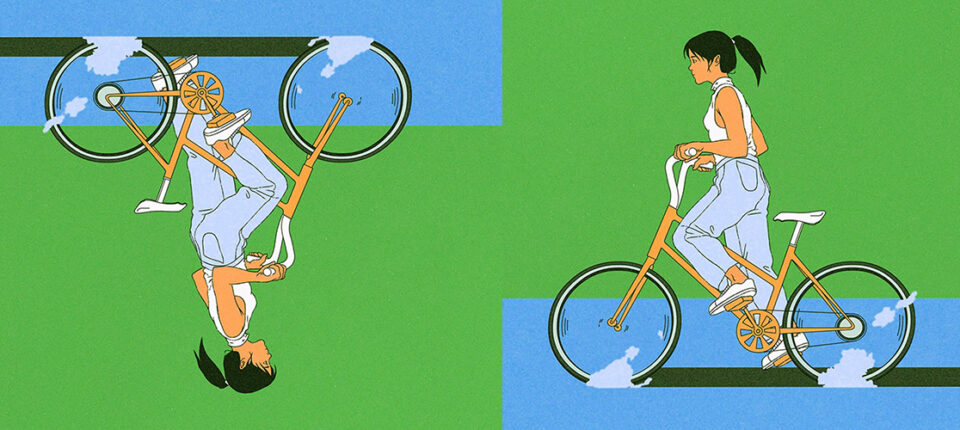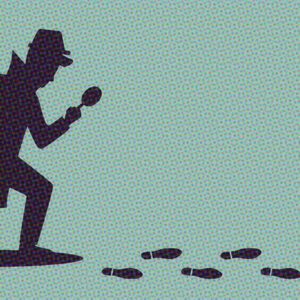During a recent visit to my hometown of Cabramatta, an immigrant settlement outside of Sydney, I stumbled upon an old diary entry written when I was 14, and I had sneaked out to a house party. The words I’d scrawled with childish naivety describe my daring escapade, told in chilling detail. On that night, and many others, I witnessed acts of violence and drug use, distressing scenes often associated with “parental advisory” warnings. As adults, we peer back into the window of our adolescence with unease, as though the past is malleable. The possibilities of what could have been continue to play on our minds, no matter how incongruent they are with our present reality.
When I mentioned this diary entry to my mother, she told me in our shared Teochew dialect, “I’m glad you weren’t pretty back then.” Her comment, though cutting, was spoken from a position of fierce parental love. It reminded me that while testing boundaries, my youthful awkwardness may have inadvertently been my safeguard. Growing up in one of Australia’s most notorious and crime-ridden towns, I recall tales of girls who weren’t as fortunate.
Throughout my childhood, my mother was a formidable presence in my life. Examples of her resourcefulness and bravery dominated stories of my family’s narrow escape from the Khmer Rouge. Like when she stood surrounded by men with AK47s pointed in her direction. There, she had to plead her case when she was overheard using modern medicine to refute the claims of a witch doctor. Her education made her a primary target in a regime known for the mass slaughter of intellectuals. On a separate occasion—during the long, arduous trip to the Thai border and while delirious with hunger—she caught an eel with her bare hands, an impressive feat that saved my family from certain starvation. When we were granted safe passage to Australia, we settled in a world of relative normalcy, and her intensity transferred to me. She hyper-fixated on the minutest things, such as how I chewed my food or the way I parted my hair.
Despite her overly critical nature, there were rare moments of tenderness, from the labour-intensive meals she prepared to the tiny freckle she would kiss at the back of my neck. Before I left for school each morning, she’d gather my hair and fix it into a ponytail. As I rounded the corner from our flat, I’d pull the hair tie out, shaking my hair loose in defiance. This was just one small way I rebelled against her and the antiquated world to which she belonged. Soon I began running with a bad crowd, skipping school, listening to rap music, and sneaking out to parties—yet no matter what steps I took to distance myself from her, she would find a way to reel me back in.
In the late 70s, after the end of the Vietnam War, our then-prime minister, Malcolm Fraser, greenlit Australia’s first major wave of Asian immigrants. The radical shift in policy from White Australia to multiculturalism shocked the nation, which had prided itself on its white sand beaches, macho, beer-guzzling blokes and tanned, bikini-clad blondes—the defining hallmarks of Australia’s identity. In subsequent years, the wariness of the greater Australian public would be exacerbated by the burgeoning heroin trade, in which our Asian immigrant community had unwittingly become the epicenter.
The drug trade fueled the rise of the Vietnamese gang known as the 5T, who sold high-grade heroin at a street level. Thousands of addicts flocked to our small town via the train line, which police dubbed “the Junkie Express.” When you stepped onto the platform, you were likely to be accosted by a school kid turned dealer. Several classmates fell prey to this seemingly glamorous role, which promised an easy escape from poverty. With their earnings, they bought designer trainers and clothing. At the school gate, they brought us gifts of alcohol, cigarettes and candy. They told us horror stories of being hounded by the police, opting to swallow the heroin-filled water balloons in their possession to avoid arrest.
For most, it was a tragic downward spiral into a life of addiction and crime. For some, it was far worse. I remember one bright, sunny morning, walking through the school gates to find my classmates in tears. It was then I learned of my friend’s untimely death. She had been found brutally murdered; her injuries so severe that she was identifiable only by the tattoo on her ankle. A family member told me, “I had a bad feeling for days,” and in reference to the horrific stab wounds found on my friend’s stomach, “They were looking for drugs.”
When I was 16, Pauline Hanson from the populist right-wing party One Nation made her infamous maiden speech in parliament, declaring, “I believe we are in danger of being swamped by Asians.” Almost overnight, the undercurrent of racism exploded, examples of which I detail in my novel “Others Were Emeralds.” Through my protagonist, Ai, I was able to show the reality of living day to day in such a hostile environment.
During a heartfelt scene in “Others Were Emeralds,” Ai asks her mother why they tolerated the racism instead of fighting back. Ai’s mum answers in her clipped, broken English, “Yes, they say bad things to us. They spit on us. But, my daughter, what can we do? In Mum’s country, my people try to kill us.” As if the outright racism weren’t enough to contend with, the 5T maintained their chokehold on our community, stalking the streets with their slick, long hair and dark, loose clothing. Like some alternative Western, shops pulled down their blinds; flipped their signs from open to closed. On the streets, we averted our eyes from their intense glares; parents shielded their daughters from view. What’s more, the criminal exploits of the 5T frequently publicised on mainstream media were synonymous with our town—we were all guilty by association.
In its present day, Cabramatta has since been gentrified and is now known as a food mecca. Spurred by vicious competition among immigrants, only the best eateries survived. In the late 2000s, my friends and New Zealand restaurateurs Krishna and Tony, in the process of opening their first restaurant, came to Cabramatta to sample the local cuisine. After lunch at a popular Vietnamese eatery, I cheekily asked, “Do you want to take the nice, safe way back, or would you like the ‘scenic route’?” They bravely chose the latter, and to this day, I can still picture Krishna in a shady back alleyway, tucking into a cup of sago pudding she’d purchased from a street vendor. When their restaurant Cafe Hanoi opened in trendy downtown Auckland, I remember seeing sago pudding on the crisp white menu, so far removed from the seedy alleyways of Cabramatta. I felt a sense then that the tide was turning.
Years later, my mother finally returned to visit her native city of Phnom Penh, where she was driven out decades before. Walking the old, familiar streets, she is assaulted with memories of when she had witnessed first-hand the brutal genocide of her people. She reminisces about the carefree time before the war when at 20, she worked as a translator. In anguish, she thinks about how little she was able to carry from her old life to her new. She thinks of me.
In a poem about grief, I once wrote, “More love is found in grief than in love itself,” a reference to how my life began, safely ensconced in my mother’s belly as she dodged bullets in the Cambodian jungle. Only now can I truly grasp the overwhelming sense of fear she must have felt the moment I was torn from her womb. Born into a world of chaos and despair, then raised in the troubled streets of Cabramatta amid the always-present danger, time and time again, it was her love that had saved me.
***


















